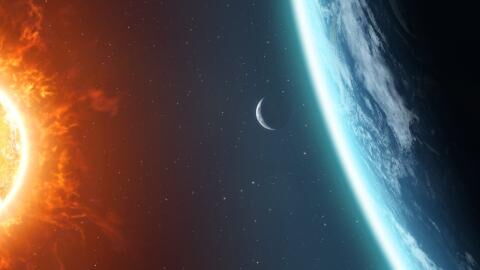After the black hole that rejects pieces of stars and a recent gamma-ray explosion announcing a potential new black hole in our universe, the news about these immense cosmic objects is numerous. A group of American researchers has discovered the existence of a new black hole 12 times larger than the sun.
Discover our latest podcast
Closest to the sun
And it's not about to stop! On 19 October, researcher Sukanya Chakrabarti and her team discovered a black hole that is 12 times larger than the sun, but also the closest to our planet ever found. The closest to the sun, but still several hundred light years away.
1/ Astronomers have found the closest black hole to Earth yet! It's quiescent — meaning it's not actively feeding — but it revealed its existence by tossing a companion star around.
— Philth Plague (@BadAstronomer) September 20, 2022
And the fact that it exists at all shows there are a *lot* more out there. pic.twitter.com/nRWFJb7ohO
However, the director of the research also highlighted its close proximity. Chakrabarti, a professor at the University of Alabama, told the Astrophysical Journal:
It is closer to the sun than any other known black hole, at a distance of 1550 light years. So it's practically in our backyard
Black holes are gigantic cosmic objects that are still very complicated to observe in space. Because of their masses, they absorb light and nothing can escape from them. This is what makes them invisible because they cannot be observed without light.
Without light, how can they be spotted?
Astrophysicists, therefore, deduce their existence from the other celestial bodies that orbit them. This is precisely the method used by the group of American researchers. According to the researcher, this black hole was detected thanks to the analysis of nearly '200 000 binary stars over the summer by the European Space Agency's Gaia satellite mission'. To be even more precise, Chakrabarti explains:
We looked for objects that had large masses comparable to the Sun, but whose brightness could be attributed to a single visible star.
A decisive role in the formation of galaxies?
According to the researcher, black holes could have a much more important role in the functioning of our universe than we thought. Chakrabarti elaborates:
In some cases, such as supermassive black holes at the centre of galaxies, they may be the origin of the formation and evolution of galaxies
It is not yet clear how these non-interacting black holes affect galactic dynamics in the Milky Way. If there are many of them, they could well affect the formation of our galaxy and its internal dynamics
This article was translated from Gentside FR.
Sources used:
-Midi Libre: espace, des chercheurs en astrophysique détectent un trou noir 12 fois plus massif que le soleil à 1550 années-lumière
-UAH: Researchers discover new monster black hole “practically in our backyard”















